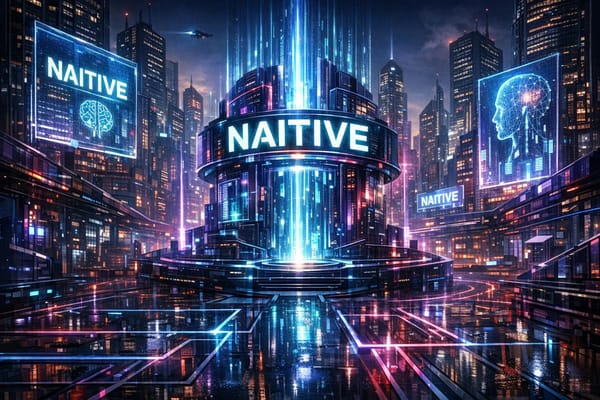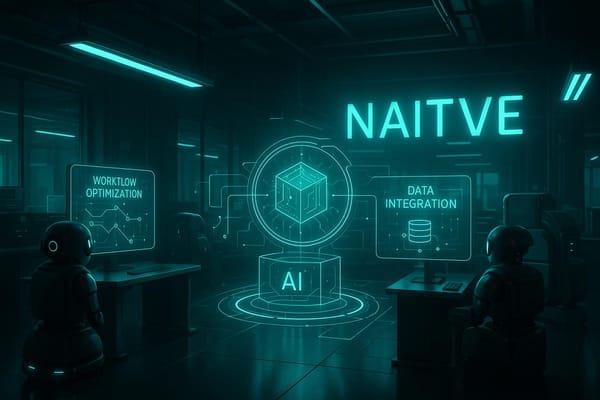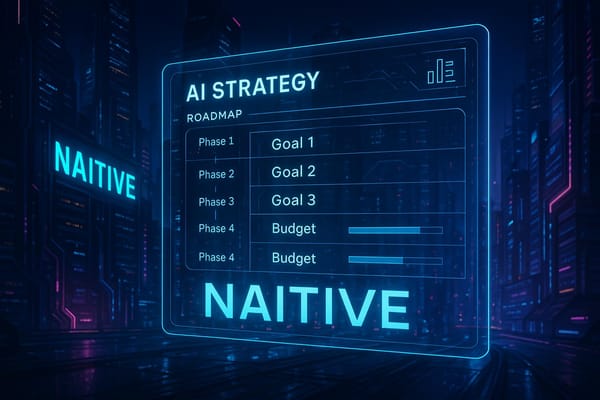2025 AI Frontier: Unleashing Key Trends in the Tech World
Discover AI trends for 2025! From investment growth to workforce impact, stay ahead in the tech world.

AI Investment Trends
As the AI landscape continues to evolve, burgeoning investment in AI technologies remains a key driver of innovation. In this section, we delve into the trends surrounding private investment growth and the forecasted growth in AI investment.
Private Investment Growth
Private investment in AI has seen significant increases over recent years. In 2021, global private AI investment reached $93.5 billion, following a notable spike from 2020 to 2021, where investment levels nearly doubled (Statista). This surge highlights the growing confidence in AI technologies to deliver substantial returns and drive transformative changes across various sectors.
| Year | Investment (in billion USD) |
|---|---|
| 2020 | 47.0 |
| 2021 | 93.5 |
The demand for AI-driven products and services, such as virtual assistants and chatbots, has fueled this investment growth. Consumers increasingly seek personalized and efficient solutions, leading to heightened private sector interest (Statista). This trend is likely to persist as AI continues to integrate further into daily life, offering convenience and efficiency.
Forecasted Growth in AI Investment
Global private investment in AI is forecasted to continue its upward trend, particularly in the United States and China, which are at the forefront of AI development. This growth is propelled by advancements in AI technologies, government support, and substantial investment in infrastructure. The following table outlines the projected growth in global private AI investment from 2015 to 2025:
| Year | Investment (in billion USD) |
|---|---|
| 2015 | 15.2 |
| 2016 | 20.5 |
| 2017 | 28.2 |
| 2018 | 42.2 |
| 2019 | 55.4 |
| 2020 | 47.0 |
| 2021 | 93.5 |
| 2022 (F) | 110.0 |
| 2023 (F) | 130.0 |
| 2024 (F) | 155.0 |
| 2025 (F) | 180.0 |
These investments are expected to drive the incorporation of AI technologies into multiple industries. Key sectors like healthcare, finance, and retail are tapping into AI to streamline operations, improve efficiency, and enhance customer experiences (Statista).
Investing in ethical and transparent AI solutions is also becoming increasingly important, prompting the development of regulations and guidelines. This trend is likely to continue as businesses and governments work to ensure responsible AI deployment.
For more detailed insights on AI trends and their implications, visit our articles on ai technology in the future and ai advancements in 2025. Additionally, for companies planning their ai strategy for 2025, it's essential to stay informed about market dynamics and investment opportunities.
Business Adoption of AI
In 2025, the adoption of AI in the business world is accelerating, driven by its potential to transform operations and enhance decision-making processes. Understanding how businesses allocate their technology budgets, the level of AI adoption, and the most popular AI technologies can provide valuable insights for technical decision-makers.
Tech Budget Allocation
Investment in artificial intelligence continues to grow, with almost half of businesses dedicating a notable portion of their technology budgets to AI. According to Hostinger, 49% of decision makers allocate between 5-20% of their company's tech budget to AI initiatives.
| Tech Budget Allocation | Percentage of Businesses |
|---|---|
| 0-5% | 25% |
| 5-20% | 49% |
| 20-50% | 20% |
| 50%+ | 6% |
These figures highlight the increasing recognition of AI's importance in driving competitive advantage and innovation.
Levels of AI Adoption
Levels of AI integration within businesses vary widely. Currently, around 56% of business leaders report either early or moderate adoption of AI within their operations (Hostinger). However, only 20% have reached a stage of full AI integration.
| Level of AI Adoption | Percentage of Businesses |
|---|---|
| Early Adoption | 30% |
| Moderate Adoption | 26% |
| Full Integration | 20% |
| No Adoption | 24% |
These statistics indicate that while many companies are beginning to incorporate AI, a smaller proportion have fully leveraged its capabilities. For further details on the adoption stages, you can explore our article on ai advancements in 2025.
Popular AI Technologies
Among the various AI technologies available, some have become more prevalent in business applications. Generative AI is the most popular, with 51% of companies utilizing it for purposes such as content creation, customer support, and process automation.
| AI Technology | Utilization Percentage |
|---|---|
| Generative AI | 51% |
| Chatbots | 42% |
| Predictive Analytics | 42% |
Generative AI's ability to streamline creative processes and automate routine tasks makes it a valuable asset. Meanwhile, chatbots are widely used for answering basic customer questions, and predictive analytics assists in forecasting future trends. Additional AI technologies and their applications can be explored further in our article on ai technology in the future.
This information reflects the growing trend of AI investments and the diverse ways businesses are leveraging AI to enhance their operations. For technical decision-makers planning their AI strategy, understanding these trends is essential for staying ahead in the competitive landscape. Explore more about how AI will shape businesses in our article on ai strategy for 2025.
Workforce Impact of AI
Artificial Intelligence (AI) continues to reshape the workforce landscape. Analyzing the impacts, a closer look at upskilling initiatives and the dynamics between job displacement and creation is essential for understanding the future of work.
Upskilling Initiatives
AI is driving organizations to invest in upskilling their employees. According to a report by Hostinger, 37% of business founders and owners plan to upskill their workforce within the next two to three years to enable a focus on strategic and higher-value tasks. Upskilling initiatives are crucial to harness the potential of AI, ensuring employees can adapt to new technologies and workflows.
Key Areas for Upskilling:
- Data Analysis Skills: With the increase in data-driven decision making, data literacy becomes crucial.
- AI and Machine Learning: Understanding the basics of AI and machine learning can help employees collaborate more effectively with AI tools.
- Technical Proficiency: Familiarity with AI-related software and tools enhances productivity.
Job Displacement vs Creation
AI's influence on the job market involves both the displacement of existing roles and the creation of new opportunities. LiveChatAI projects that by 2027, AI could lead to a 23% job displacement but simultaneously create 49% new roles. This statistic underscores the importance of reskilling and upskilling the workforce to meet the demands of the evolving job landscape.
| Year | Job Displacement (%) | Job Creation (%) |
|---|---|---|
| 2025 | 15 | 30 |
| 2027 | 23 | 49 |
Areas of Job Creation:
- AI Specialists: New roles will emerge requiring expertise in AI development and maintenance.
- Data Scientists: The surge in data analysis roles driven by AI.
- Tech Support: Increased necessity for tech support to manage AI tools.
As AI continues to evolve, its impact on the workforce will be profound. Addressing the balance between job displacement and creation, and investing in upskilling initiatives, will be critical for businesses planning their AI strategy for 2025. For further reading on AI trends, explore our articles on ai advancements in 2025 and ai technology in the future.
Future Trends in AI
Exploring the AI landscape of 2025 reveals several significant trends that will shape industries and influence tech strategies.
Generative AI Dominance
Generative AI is anticipated to become a significant force in the AI industry. Encompassing applications such as ChatGPT for customer interactions and AI-driven content creation, generative AI is expected to dominate 43% of the AI market by 2030.
| Year | Expected Market Share of Generative AI |
|---|---|
| 2025 | 35% |
| 2030 | 43% |
This growth underscores the increasing reliance on AI for creative and operational tasks. Companies are integrating generative AI into their business models to enhance efficiency and innovation. For future insights on the technology's trajectory, visit our article on ai technology in the future.
AI Integration in Branding
AI's role in business strategies continues to expand, particularly in branding. By 2025, an estimated 30% of S&P companies are predicted to utilize AI-driven branding strategies (LiveChatAI). These strategies will reshape product offerings and introduce new revenue streams, highlighting AI's transformative influence on brand identity and market positioning.
Companies leveraging AI for branding can personalize marketing efforts, predict consumer behavior, and streamline operations, thus enhancing overall brand experience. For more on anticipating AI advancements, visit ai advancements in 2025.
AI's Influence on Job Landscape
The impact of AI on the workforce is profound. AI is projected to lead to 23% job displacement by 2027, yet it will create 49% new roles in the same timeframe. This dual impact emphasizes the need for reskilling and upskilling employees to stay relevant in an AI-driven world.
| Impact | Percentage |
|---|---|
| Job Displacement | 23% |
| New Job Creation | 49% |
With companies investing in upskilling initiatives—37% of business founders and owners plan to upskill their employees in the coming years (Hostinger)—the transition can be managed effectively. For a deeper dive into job market predictions, see our ai development predictions 2025.
Exploring these future trends highlights the transformative potential of AI, guiding technical decision-makers to strategize effectively for 2025 and beyond. For strategic planning, visit ai strategy for 2025.
Regulatory Environment
Regulations surrounding the deployment and ethical considerations of artificial intelligence (AI) are becoming increasingly critical. Understanding this evolving landscape is essential for technical decision-makers.
Government Regulations on AI
Governments worldwide are gearing up to implement comprehensive regulations on AI usage by 2025. The European Union, for instance, has plans to introduce AI regulations within the next six to twelve quarters (TechTarget). These regulations will focus on ensuring ethical AI deployment while balancing innovation and public safety.
In the United States, the regulatory environment is also becoming more complex. The US Congress has introduced numerous federal laws related to AI, alongside various state-level legislative efforts. Over 120 AI-related bills are currently under consideration, addressing concerns from AI education to national security. The White House Executive Order on AI and proposed federal regulations are also shaping a framework for responsible AI development.
| Region | Regulatory Focus | Timeline |
|---|---|---|
| European Union | Ethical AI Deployment | Next 6 to 12 Quarters |
| United States | Education, National Security, and Compliance | 2023 - 2025 |
Ethical Considerations
Ethical considerations are at the forefront of AI regulation. Governments are striving to ensure that AI technologies are transparent, accountable, and devoid of biases. Businesses will need to adopt measures to ensure conformity with these ethical standards, promoting transparency in their AI operations (CEO Today Magazine).
To conform to ethical guidelines, companies should consider:
- Ensuring transparency in AI decision-making processes
- Regularly auditing AI systems for biases
- Establishing accountability mechanisms for AI outcomes
For more on how ethical considerations influence AI trends, visit our article on ai advancements in 2025.
Trend of Regulations Globally
Global regulations are on the rise, with numerous countries instituting their frameworks to manage AI deployment. The European Union's forthcoming regulations illustrate a significant trend towards standardized AI control across member states (TechTarget). Similarly, the United States is developing federal and state-level regulatory frameworks to address diverse AI-related issues.
Businesses must keep an eye on these global regulatory trends to ensure compliance and leverage AI effectively. For strategic insights on how to adapt to these regulatory changes, check out our content on ai strategy for 2025.
| Country | Key Regulatory Actions |
|---|---|
| United States | 120+ AI-related Bills, Federal Regulations |
| European Union | Comprehensive AI Regulations in Development |
Understanding and adapting to these regulatory trends will be essential for businesses to harness the full potential of AI technologies while maintaining compliance.
Applications of AI in 2025
Streamlining Operations
In 2025, businesses are increasingly adopting AI to streamline their internal operations. AI technologies help optimize processes such as supply chain management, predictive analytics, and customer personalization, driving cost savings and operational efficiency. Companies in sectors like healthcare, finance, and retail are leveraging AI to automate routine tasks, reduce errors, and enhance productivity.
| Industry | AI Application | Impact |
|---|---|---|
| Healthcare | Predictive Analytics | Improved patient care |
| Finance | Fraud Detection | Increased security |
| Retail | Inventory Management | Reduced stockouts |
Learn more about how AI is changing the future of business operations in our ai technology in the future section.
Data-Driven Decision Making
Data-driven decision-making is essential for successful businesses in 2025. Organizations rely on data analytics to personalize experiences, streamline operations, and make informed business decisions (CEO Today Magazine). AI algorithms analyze vast amounts of data to provide actionable insights, enabling enterprises to respond swiftly to market changes and consumer preferences.
| Use Case | AI Tool | Benefit |
|---|---|---|
| Marketing | Predictive Analytics | Targeted campaigns |
| Operations | Process Automation | Increased efficiency |
| Sales | Customer Insights | Better strategies |
For detailed insights, visit our article on ai development predictions 2025.
Consumer Experience Enhancement
The demand for personalized and efficient solutions continues to rise, with AI playing a pivotal role in enhancing consumer experience. AI-driven products and services, such as virtual assistants and chatbots, streamline daily tasks and improve overall user satisfaction (Statista). The integration of AI in consumer-facing applications helps businesses deliver tailored experiences, fostering customer loyalty and satisfaction.
| AI Application | Consumer Benefit | Example |
|---|---|---|
| Virtual Assistants | Task Automation | Alexa, Siri |
| Chatbots | 24/7 Support | Customer service |
| Personalized Advertising | Relevant Offers | Google Ads |
For more about the impact of AI on consumer experience, check our section on ai advancements in 2025.
By incorporating AI into various aspects of business practice, organizations can expect to see significant improvements in efficiency, data utilization, and customer satisfaction. Planning for these AI trends in 2025 is critical for technical decision-makers aiming to stay ahead in the rapidly evolving tech landscape. For further strategic insights, explore our article on ai strategy for 2025.




